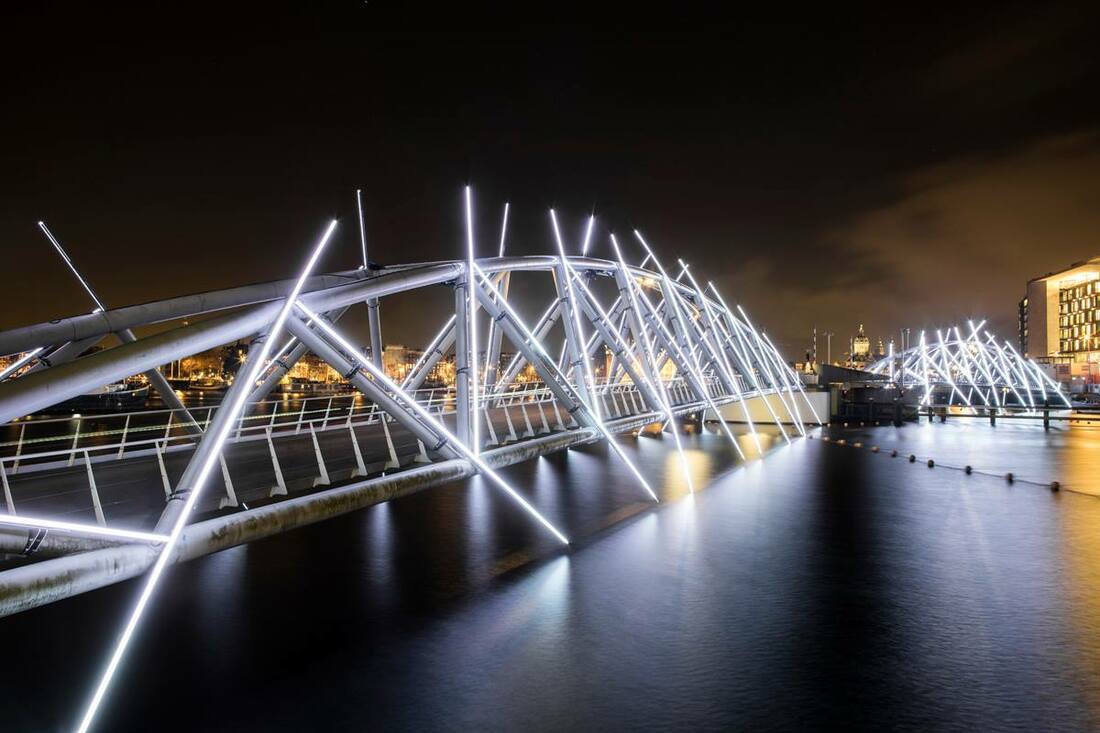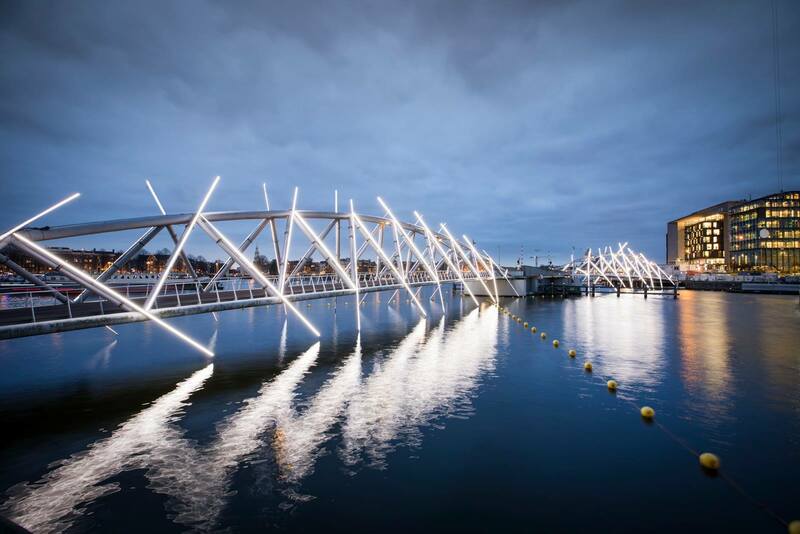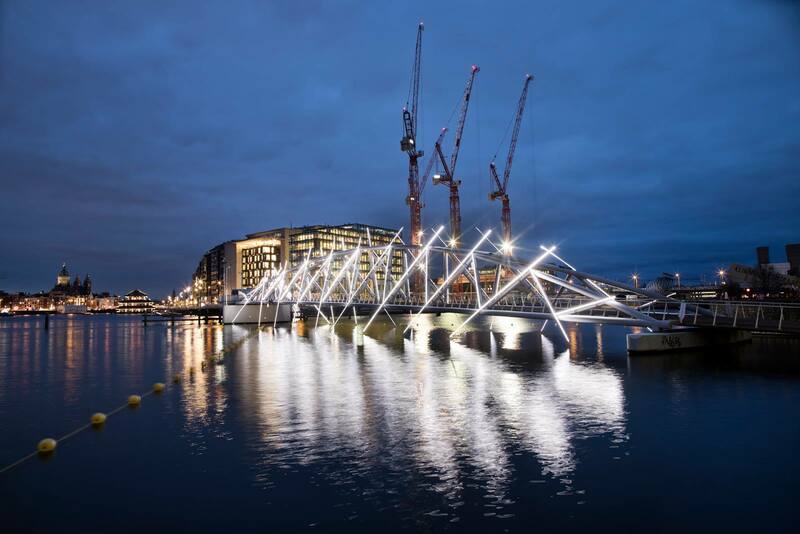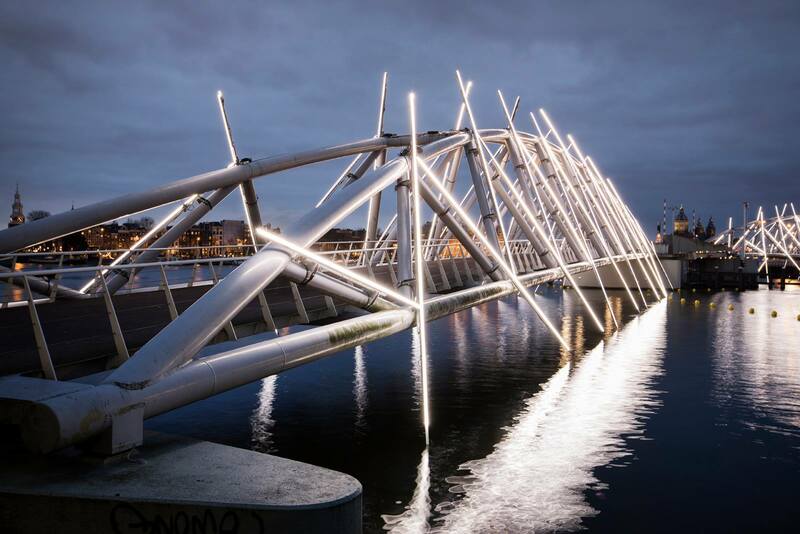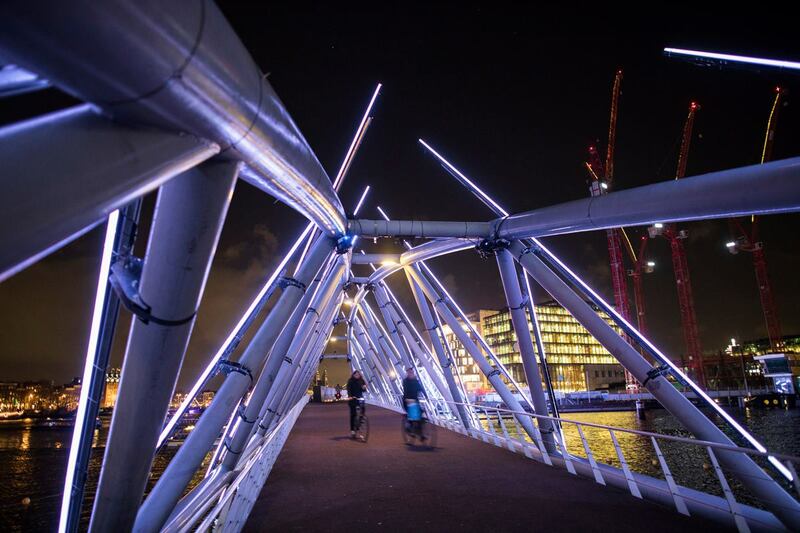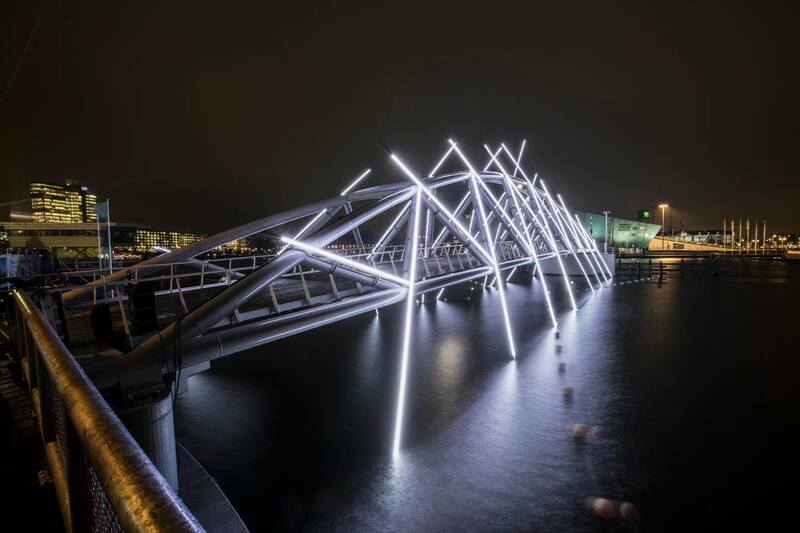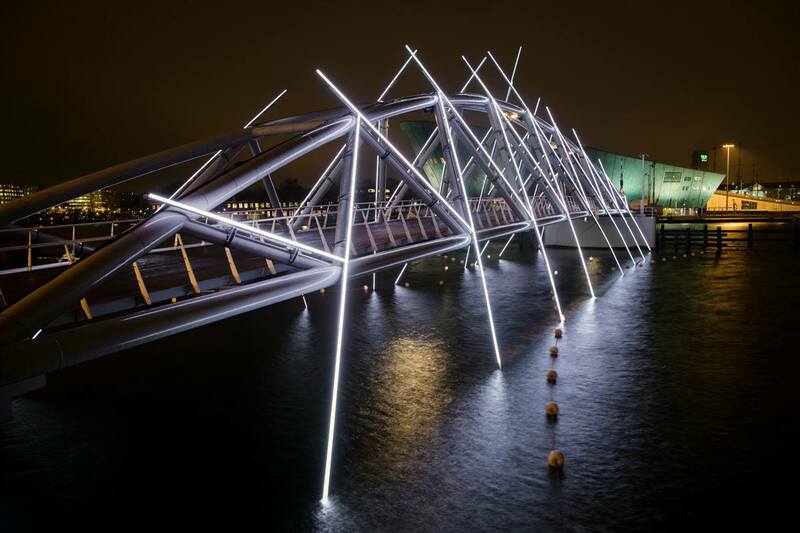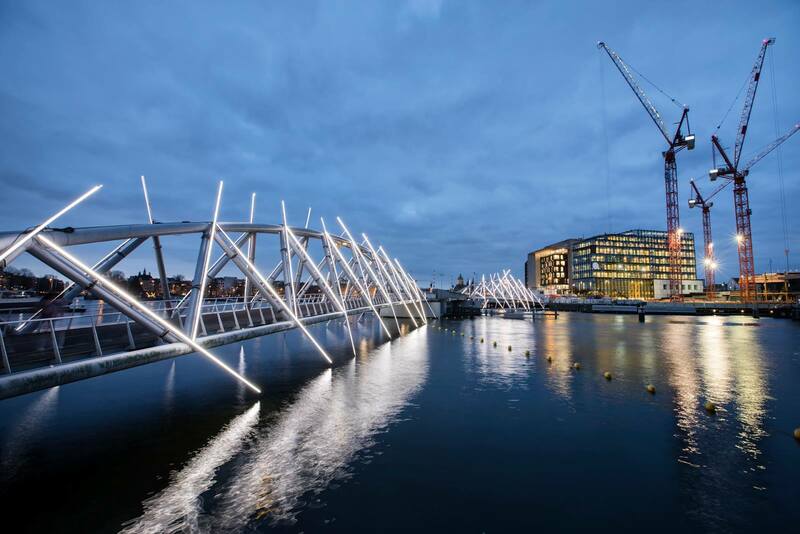Mr. J.J. van der Veldebrug
Amsterdam Light Festival, Amsterdam, 2018
LED strips, acrylc tubes, steel profiles
180 x 6 x 16 m.
|
Het principe is eenvoudig, de uitkomst complex’. Zo omschrijft Peter Vink zijn installatie die hij vernoemde naar de locatie waar die zich bevindt: de Mr. J.J. van der Veldebrug.
De vele driehoeken waaruit de brug is opgebouwd – die bestaat uit twee boogbruggen voor wandelaars en fietsers met daartussen een ophaalbrug voor het scheepsverkeer – waren voor Vink het uitgangspunt in zijn ontwerp. Hij trok de lijnen van de driehoeken over in helder wit licht en verlengde ze omhoog én omlaag het water in, alsof hij de lijntjes die de architecten aan de tekentafel tijdens het ontwerpproces hadden uitgegumd weer wilde terugbrengen. Zo maakte hij gigantische, indrukwekkende lichtsculptuur met de brug als geraamte. De architecten die de brug in 1992 hebben ontworpen om het Oosterdokseiland te verbinden met de IJ-tunnel en de binnenstad, koos expres voor een relatief lichte, open staalconstructie zodat het zicht over het water van het Oosterdok zo vrij mogelijk zou blijven. De brug is daardoor heel bescheiden aanwezig in de omgeving. Vink draait dat gegeven om en maakt de brug juist tot een opvallend kunstwerk dat een eigen plek claimt: een baken in het Oosterdok. Zoals altijd het geval is bij Vink zou dit kunstwerk op geen enkele andere plek kunnen bestaan, omdat het volledig is verweven met de structuur en de vormen van de brug. Kunstenaars kiezen er sinds de jaren ‘60 overigens vaker voor om monumentale gebouwen en daarmee hun omgeving te transformeren. Maar waar de beroemde kunstenaar Christo er bijvoorbeeld voor kiest om aandacht te vragen voor bouwwerken als de Berlijnse Rijksdag door ze in te pakken en te verbergen, plaatst Vink juist de vormen en lijnen van de brug op de voorgrond door ze te verlichten en te verlengen. En met licht geeft hij niet alleen de Mr. J.J. van der Veldebrug, maar het Oosterdok als geheel een ander gedaante. Tekst: Roos Hollander / alle foto’s: Janus Van Den Eijnden |
“The principle is simple; the outcome is complex.” That’s how Peter Vink describes his installation, which he named after the location it is placed in, the bridge 'Mr. J.J. van der Veldebrug'.
The bridge is made up of two arches for walkers and cyclists and a drawbridge for shipping traffic, but it was the many triangles that formed the starting point for Vink’s design. He traced the lines of the triangles with bright white light and extended them into and out of the water, almost like bringing back the lines that the original architects erased from the drawing board during the design process. This is how the bridge’s skeleton formed the basis of his very large and impressive light sculpture. Designed in 1992 to connect the Oosterdokseiland with the IJ tunnel and the city centre, the architects deliberately opted for a relatively light, open steel construction to keep the view of the Oosterdok as unobstructed as possible. That’s why the bridge is quite modest. Vink reverses that and transforms the bridge into a striking piece of art, a real beacon of light in the Oosterdok. As is usually the case with Vink’s work, this artwork could not exist in any other place – it is interwoven in the structure and the shapes of the bridge. Since the 1960s artists have opted for more monumental buildings for their artworks and have attempted to transform the environment in which they are located. Where the famous artist Christo, for example, chooses to draw attention to buildings by wrapping them up (like he did with the Reichstag in Berlin), Vink highlights the shapes and lines of the bridge by illuminating and extending them. Not only does he give the Mr. J.J. van der Veldebrug a whole different look using light, but the entire area of Oosterdok too. Text by Roos Hollander / all photos by: Janus Van Den Eijnden |
This artwork is supported by:

